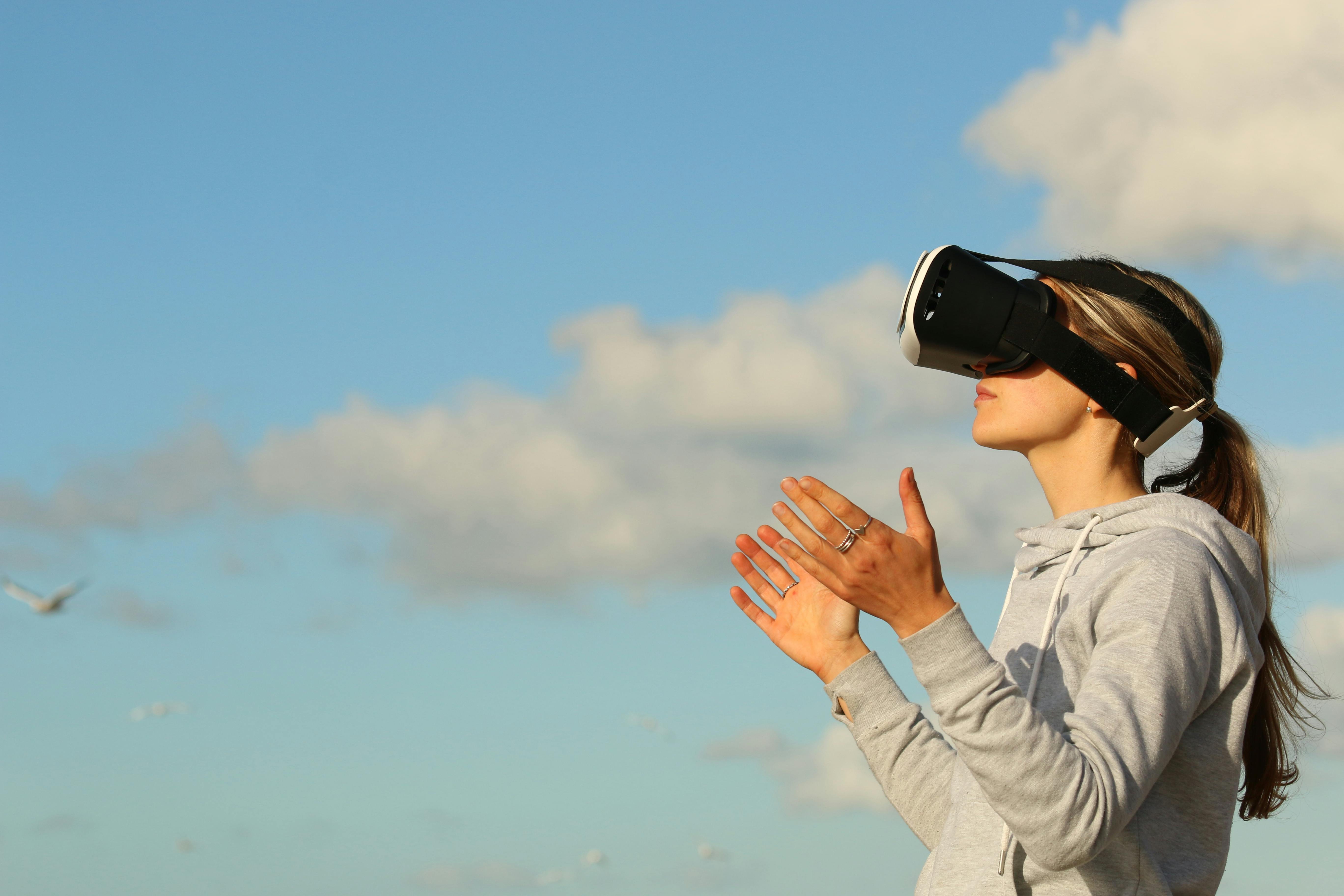Did you know that your sleeping position can have an impact on the way your face looks? It turns out that side sleeping, a position many of us find comfortable, can actually cause changes in our facial appearance over time. While there are several factors at play here, including duration of sleep and genetics, the pressure exerted on your face when you rest on your side can lead to the development of sleep lines and wrinkles. In this article, we will explore the effects of side sleeping on your face and provide tips on how to mitigate these changes, so you can wake up looking refreshed and rejuvenated.

The Impact of Side Sleeping on Facial Structure
We all know how important sleep is for our overall well-being, but did you know that the way you sleep can also affect the structure of your face? The position in which you sleep can have a significant impact on your facial features and the aging process. In this article, we will explore the relationship between sleeping positions and facial changes, specifically focusing on the effects of side sleeping on the face. We will delve into the science behind these changes and discuss ways to prevent or minimize the potential negative effects. So if you are a side sleeper, it’s time to read on and discover the impact of side sleeping on your facial structure!
The Relationship Between Sleeping Positions and Facial Changes
Before we delve into the specific effects of side sleeping on the face, it’s essential to understand the broader relationship between sleeping positions and facial changes. When we sleep, gravity takes its toll on our bodies, and our facial tissues are no exception. The position in which we sleep determines how gravity interacts with our facial muscles, skin, and underlying structures. Different sleeping positions can lead to distinct changes in facial appearance over time.

How Side Sleeping Affects the Face
Among the various sleeping positions, side sleeping is by far the most popular. It is estimated that up to 70% of people prefer to sleep on their sides. While side sleeping has its advantages, such as reducing the risk of snoring and managing acid reflux, it also comes with its fair share of disadvantages when it comes to facial changes. Let’s explore these effects in more detail:
Flattening of the Cheeks
One of the primary facial changes that can occur as a result of side sleeping is the flattening of the cheeks. When you consistently rest your face on a pillow while sleeping on your side, the pressure applied to your cheeks can compress the underlying fat pads. Over time, this can lead to the loss of volume in the cheeks, making them appear flatter and less defined.
Development of Sleep Lines and Wrinkles
Another common effect of side sleeping is the development of sleep lines and wrinkles on the face. When you sleep on your side, the force of gravity and the pressure applied to your face can cause creases and lines to form. These lines, also known as sleep lines, can become more pronounced and permanent over time, contributing to the overall aging of the face.
Obstruction of Blood Flow and Puffy Eyes
Side sleeping can also obstruct blood flow to the face, leading to puffy eyes. When you sleep on your side, the side of your face that is in contact with the pillow experiences increased pressure. This pressure can impede proper blood circulation, resulting in fluid retention and puffiness around the eyes. Puffy eyes are not only aesthetically displeasing but can also make you look tired and older than you actually are.
The Science Behind Facial Changes from Side Sleeping
Understanding the science behind facial changes from side sleeping can provide valuable insights into the mechanisms behind these effects. Two key factors contribute to these changes: gravity and the redistribution of facial volume.
The Effect of Gravity on Facial Skin Elasticity
Gravity plays a critical role in the aging process by gradually pulling down on the facial tissues. When you sleep on your side, gravity exacerbates the sagging effect on your facial skin by tugging it downwards. This constant downward pull can lead to a loss of elasticity and the formation of wrinkles and sagging skin.
Gravity’s Influence on Facial Volume Distribution
In addition to affecting skin elasticity, gravity also influences the distribution of facial volume. When you consistently sleep on one side, the side that bears the weight of your head experiences increased pressure, compressing the underlying tissues. This compression can gradually cause a redistribution of facial fat, leading to a loss of volume in some areas and an accumulation in others. The result is an asymmetrical appearance and a loss of youthful facial contours.

Comparing the Effects of Side Sleeping versus Other Sleeping Positions
Now that we have explored the specific effects of side sleeping on facial changes, let’s compare these effects to other common sleeping positions.
Side Sleeping vs. Back Sleeping
Compared to side sleeping, back sleeping is generally considered more favorable for facial appearance. When you sleep on your back, there is minimal pressure applied to the face, allowing the skin to maintain its natural position and minimizing the risk of developing sleep lines and wrinkles. Back sleeping also promotes proper spinal alignment, reducing the risk of neck and back pain. However, back sleeping may not be suitable for those who snore or suffer from sleep apnea.
Side Sleeping vs. Stomach Sleeping
Stomach sleeping, also known as prone sleeping, is often considered the least desirable sleeping position for overall health and facial appearance. When you sleep on your stomach, your face is pressed against the pillow for a prolonged period, leading to increased pressure and potential damage to the skin and underlying structures. Stomach sleeping may exacerbate the development of sleep lines, wrinkles, and even acne breakouts. Additionally, this position can strain the neck and spine, leading to discomfort and potentially contributing to long-term musculoskeletal issues.
Preventing or Minimizing Facial Changes from Side Sleeping
If you are a committed side sleeper but want to prevent or minimize the potential negative effects on your facial appearance, there are various strategies you can employ. Here are some tips to help you maintain a healthy and youthful-looking face:
Choosing the Right Pillow
One of the most important aspects of preventing facial changes from side sleeping is choosing the right pillow. Look for a pillow that provides adequate support to your head, neck, and shoulders while keeping your spine aligned. A pillow with memory foam or other contouring materials can help reduce pressure on your face and distribute the weight more evenly.
Utilizing Face Positioning Techniques
To minimize the impact of side sleeping on your face, consider positioning your face in a way that reduces direct contact with the pillow. For example, placing a soft and breathable cloth between your face and the pillow can act as a barrier, reducing the pressure and friction on your skin. You can also experiment with different pillow positions to find the most comfortable and face-friendly sleep position.
Considering Alternative Sleeping Positions
If you are open to changing your sleeping position, consider transitioning to either back sleeping or a combination of back and side sleeping. Gradually training yourself to sleep in a different position may take time, but it can contribute to preserving your facial structure and reducing the risk of sleep lines, wrinkles, and asymmetries caused by side sleeping.
Facial Exercises and Massage to Counteract Side Sleeping Effects
In addition to adjusting your sleeping habits, incorporating facial exercises and massage techniques into your daily routine can help counteract the effects of side sleeping on your facial appearance. These exercises and massage techniques aim to strengthen the facial muscles, improve blood circulation, and promote healthier skin.
Facial Exercises to Strengthen Facial Muscles
Facial exercises, also known as facial yoga or facial muscle toning, involve performing specific movements and stretches to target various muscles in the face. These exercises can help tone and lift sagging facial muscles, improving the overall structure and appearance of the face. Examples of facial exercises include cheek lifts, jawline definers, and eyebrow raises. The consistent practice of these exercises can help counteract the flattening and sagging effects of side sleeping.
Face Massage Techniques to Improve Blood Circulation
Regular face massages can do wonders for your skin’s health, especially if you are a side sleeper. Massaging the face stimulates blood flow, promotes lymphatic drainage, and increases the delivery of oxygen and nutrients to the skin cells. You can use your fingertips or specialized facial massage tools to gently massage your face in upward and circular motions. Focus on areas prone to puffiness, such as around the eyes, and areas where you notice sleep lines or wrinkles.
Skincare Tips for Side Sleepers
Alongside adjusting your sleeping habits and incorporating facial exercises and massage, taking care of your skin is crucial for minimizing facial changes caused by side sleeping. Here are some essential skincare tips specifically tailored for side sleepers:
Hydrating and Nourishing the Skin
Side sleeping can potentially lead to dry skin, as the constant contact with the pillow can cause moisture loss. To combat this, it is important to keep your skin well-hydrated and nourished. Use a good quality moisturizer that suits your skin type, preferably one with hydrating and anti-aging properties. Additionally, incorporating a hydrating facial mask into your skincare routine once or twice a week can provide an extra boost of moisture.
Using Anti-Aging Products
To target the effects of side sleeping on your facial appearance, consider using anti-aging products that specifically address concerns such as fine lines, wrinkles, and loss of skin elasticity. Look for products that contain ingredients like retinol, hyaluronic acid, and peptides, as these have been shown to be effective in improving the overall appearance and youthfulness of the skin.
Protecting the Skin from Pressure and Friction
To minimize the pressure and friction on your skin while side sleeping, consider using silk or satin pillowcases. These materials are smoother and gentler on the skin, reducing the risk of sleep lines and wrinkles. Additionally, ensure that your pillowcase is clean and changed regularly to avoid the buildup of bacteria and oils that can lead to breakouts and skin irritation.
The Importance of Adequate Sleep for Skin Health
While we have focused primarily on the impact of side sleeping on facial structure, it’s essential to emphasize the overall role of sleep in maintaining healthy skin. Sleep quality and duration play a significant role in the health and appearance of our skin. Poor sleep can lead to increased levels of stress hormones, which can contribute to inflammation, breakouts, and an overall dull complexion. On the other hand, sufficient quality sleep allows the body to repair and regenerate, keeping the skin looking fresh, radiant, and youthful.
The Impact of Sleep Quality and Duration on Facial Appearance
During deep sleep, the body goes through various processes to repair damaged cells, produce collagen, and restore overall skin health. When you consistently get poor quality sleep or inadequate sleep duration, these restorative processes are compromised, leading to a range of negative effects on the skin. These effects can include increased signs of aging, uneven skin tone, and a reduction in the skin’s natural glow.
Tips for Improving Sleep Quality
If you are concerned about the impact of side sleeping on your facial appearance, it is crucial to prioritize improving your sleep quality overall. Here are some tips to help you achieve better sleep:
-
Stick to a consistent sleep schedule: Go to bed and wake up at the same time every day, even on weekends. This helps regulate your body’s internal clock and promotes healthier sleep patterns.
-
Create a soothing sleep environment: Make your bedroom a peaceful and relaxing space by reducing noise, keeping the room cool and dark, and investing in a comfortable mattress and pillows.
-
Establish a bedtime routine: Develop a relaxing routine before bed to signal to your body and mind that it is time to wind down. This could include activities such as reading, taking a warm bath, or practicing relaxation techniques like meditation or deep breathing exercises.
-
Limit exposure to screens: The blue light emitted by electronic devices can interfere with your sleep-wake cycle. Avoid using screens, such as smartphones or laptops, for at least an hour before bed.
-
Avoid stimulants and heavy meals close to bedtime: Caffeine, nicotine, and large meals can disrupt sleep. Limit your intake of these substances, especially in the evening hours.
By making sleep a priority and adopting healthy sleep habits, you can help support your skin’s health and minimize the potential negative effects of side sleeping.
When to Seek Professional Help
While adjusting your sleeping position and implementing skincare and self-care techniques can go a long way in mitigating the facial changes caused by side sleeping, there may come a point where seeking professional help is beneficial. If you are concerned about the long-term effects on your facial structure or have specific cosmetic concerns, consider consulting with a dermatologist or plastic surgeon. These experts can assess your individual situation and recommend non-invasive cosmetic procedures or treatments tailored to your needs.
Consulting with a Dermatologist or Plastic Surgeon
Dermatologists and plastic surgeons specialize in the medical and surgical management of skin-related concerns. If you have noticed significant facial changes related to side sleeping or have specific cosmetic concerns, scheduling a consultation with one of these professionals can provide valuable insight and guidance. They may recommend non-invasive options such as injectables, laser treatments, or specialized skincare regimens to address your specific concerns and help rejuvenate your facial appearance.
Exploring Non-Invasive Cosmetic Procedures
Non-invasive cosmetic procedures have become increasingly popular as a way to address facial changes and promote a more youthful appearance. These procedures typically involve minimal downtime and can provide noticeable improvements.
Some non-invasive procedures that may be recommended for side sleepers include:
-
Dermal fillers: Fillers can restore lost facial volume and improve contour irregularities caused by side sleeping. They can help address issues such as flattened cheeks or the appearance of nasolabial folds.
-
Laser treatments: Laser treatments can improve skin laxity, stimulate collagen production, and reduce the appearance of wrinkles and fine lines caused by side sleeping.
-
Radiofrequency treatments: Radiofrequency treatments use heat energy to tighten the skin and improve its overall texture and firmness.
It’s important to remember that any cosmetic procedures should be performed by qualified professionals, and a thorough consultation is essential to discuss your concerns, expectations, and potential treatment options.
Conclusion
Sleeping is undoubtedly a fundamental aspect of our daily lives, and the position in which we sleep can significantly impact our facial structure. Side sleeping, while a popular choice for many, can lead to various facial changes such as flattened cheeks, sleep lines, and obstructed blood flow to the face. Understanding the science behind these changes and taking proactive steps to minimize their effects can help maintain a healthy and youthful appearance. By choosing the right pillow, considering alternative sleeping positions, engaging in facial exercises and massage, practicing proper skincare, and prioritizing quality sleep, you can mitigate the potential negative effects of side sleeping on your facial structure. And if you have specific concerns or desire more significant improvements, don’t hesitate to seek professional help. Remember, a well-rested and cared-for face is a happy face!






